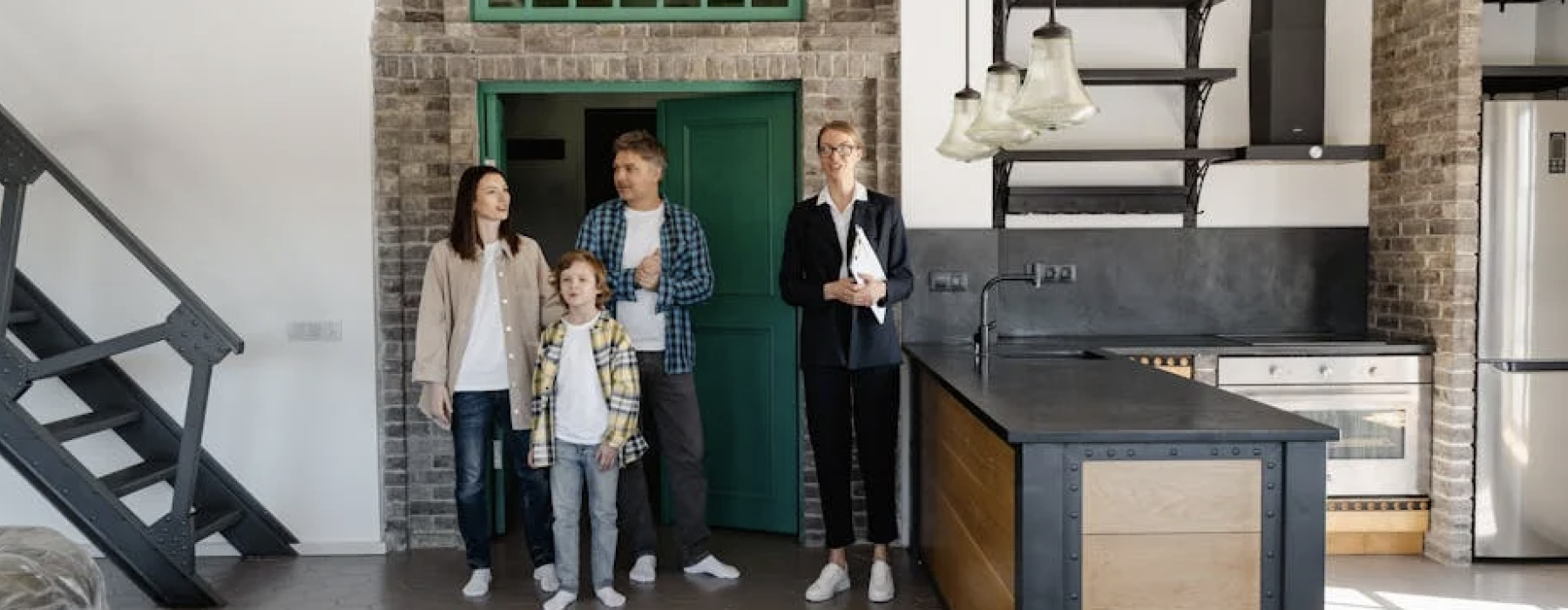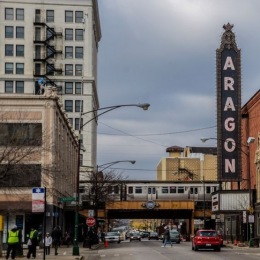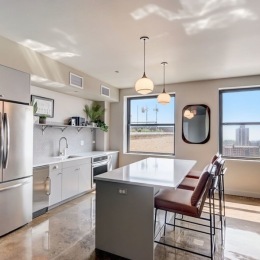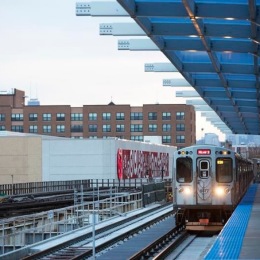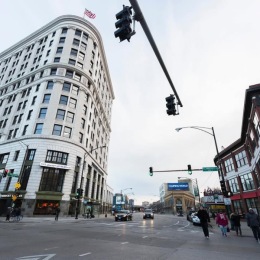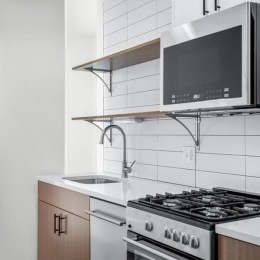Why Finding Affordable Apartments for Students is Your Key to College Success
Affordable apartments for students are rental units that typically cost under 30% of your monthly income and often include utilities, internet, and student-friendly amenities. Based on current market data, these range from shared rooms starting around $645 per month to private studios averaging $1,419 monthly.
Quick Answer - What Makes Student Housing Affordable:
- Rent Range: $645-$1,799/month depending on size and location
- Utilities Included: Most student apartments include heating, internet, and basic utilities
- Flexible Leases: Semester-length options available at many properties
- Shared Options: By-the-bed leases and roommate matching reduce individual costs
- Location: Properties within 1-2 miles of major universities offer the best value
College housing costs have skyrocketed, but smart students know that moving off-campus can actually save money while gaining independence. Chicago's vibrant student community and diverse neighborhoods make it an ideal market for budget-conscious students seeking quality housing options.
The key is knowing where to look and when to start your search. Most successful apartment hunters begin their search 4-5 months before move-in to secure early-bird discounts and the best selection.
Whether you're leaving the dorms for the first time or looking to upgrade your current living situation, the right apartment can transform your college experience without breaking your budget.
What Counts as Affordable? Rent Benchmarks & Budgeting
Let's be honest - figuring out what you can actually afford as a student feels like solving a puzzle with half the pieces missing. Between part-time job paychecks, financial aid, and maybe some family support, your income probably looks nothing like a traditional salary.
The 30% rule still serves as your North Star here. This means your rent shouldn't gobble up more than 30% of your monthly income. But here's the thing - when you're hunting for affordable apartments for students, this calculation gets a bit more creative since your "income" might include that work-study job, your summer savings, or help from home.
Current market data shows student housing ranging from around $647 to $2,849 per month. That's a pretty wide spread, and the good news is that most student-focused rentals bundle utilities right into the rent price.
Average Student Rents by Unit Type
Studios average around $1,419 monthly - perfect if you love your own space but can handle compact living. 1-bedroom apartments bump up to about $1,799 average. 2-bedroom units actually dip down to around $1,375 monthly, making them perfect for splitting with one roommate.
But here's the real winner: 4-bedroom apartments average $1,109 per month total. Split that four ways, and you're looking at roughly $277 per person. That's less than many students spend on textbooks each semester.

Setting a Realistic Budget
Security deposits typically run 1-2 months' rent upfront. Renter's insurance adds another $15-30 monthly, but it's worth every penny when your laptop gets stolen or a pipe bursts.
If utilities aren't included, budget around $100-150 monthly for the basics. Internet can run $50-80 monthly, and don't forget about parking permits if you're bringing a car - these can range from $25-100 monthly.
Plan for $2,000-3,000 in upfront costs when you move in. This covers your first month's rent, security deposit, and setup expenses.
Top Neighborhoods & Listings for Affordable Apartments for Students
Finding the perfect student neighborhood means balancing your budget with quality of life. The best affordable apartments for students are typically located within 1-2 miles of major universities.
Lincoln Park stands out as a vibrant hub where students can enjoy nightlife and cultural attractions without paying premium prices. Lakeview was practically designed with students in mind, boasting the highest concentration of student-friendly amenities.
Wicker Park offers a unique blend of creative energy and competitive rental rates. Logan Square provides a quieter living environment with tree-lined streets and cozy local cafes. Uptown represents the premium end of student housing while still maintaining budget-friendly options.
The most budget-conscious options start around the $647 mark for private rooms with utilities included.
Search Hacks for Affordable Apartments for Students
Smart apartment hunting starts with strategic searching. Filter by distance first - begin within a 1-mile radius of campus, then expand to 2 miles. Beyond this range, transportation costs eat into housing savings.
By-the-bed leases let you rent just your bedroom while sharing common areas, and you're only responsible for your portion even if roommates move out mid-lease.
Many properties offer cashback incentives or early-bird discounts for students who sign leases 3-4 months in advance. Flexible lease terms align with academic schedules, avoiding awkward summer months.
Amenities That Stretch Your Dollar
Furnished units eliminate furniture costs. Included Wi-Fi saves $50-80 monthly. Study lounges reduce library expenses while on-site fitness centers eliminate gym membership fees.
Security systems provide peace of mind without additional costs. Laundry credits can save $20-40 monthly on wash cycles.
When & How to Land an Affordable Apartment
The secret to finding affordable apartments for students isn't just knowing where to look—it's knowing when to look. Start your search 4-5 months before you need to move in for early-bird discounts and the widest selection.
Your timeline: Begin researching 6 months out, shift into active searching at 4-5 months, and submit applications by 3 months before move-in. Wait until 2 months out, and you'll compete for leftover units at higher prices.
The Application Process Step-by-Step
You'll need: government-issued ID, proof of enrollment, income verification, co-signer information if needed, and references from previous landlords.
Most properties require a credit check. Don't worry—many student-focused apartments expect limited credit history and work with co-signers.
Timing Your Move & Taking Advantage of Deals
Group bookings work well if you're living with friends—many properties offer discounts for multiple students applying together. Semester sublets create opportunities when other students study abroad or graduate early.
Keep an eye out for last-minute fill-ins with discounted rates to fill vacant units quickly. Some properties offer "No Visa No Pay" cancellation options for international students.
Dorms vs Affordable Apartments for Students
The decision between dorms and apartments involves more than just cost. Let's break down the real differences:

When you crunch the numbers, affordable apartments for students often come out ahead financially. While dorms include meal plans in their pricing, apartments give you the freedom to cook your own meals and potentially save hundreds each month.
Space makes a huge difference in your daily life. Dorms typically squeeze students into small shared rooms with minimal storage. Apartments offer significantly more living space, private bathrooms, and actual kitchens where you can prepare your favorite meals instead of relying on dining hall schedules.
Privacy becomes precious during college years. Apartment living means you won't have residence advisors checking in or mandatory floor meetings. You can study when you want, have friends over without signing them in, and create your own schedule without worrying about quiet hours.
The meal flexibility that comes with apartment living often surprises students. Instead of being locked into expensive meal plans, you can shop for groceries, cook with friends, or grab takeout when you're swamped with finals. Many students find they eat healthier and spend less money when they control their own food choices.
Community building happens differently in apartments versus dorms. While dorms offer built-in social opportunities through floor activities and shared spaces, apartments let you choose your living companions and create more meaningful relationships with people who share your lifestyle and study habits.
Pros & Cons Snapshot
Apartment living brings financial freedom and real-world experience. You'll handle utility setup, manage your own schedule, and gain independence that serves you well after graduation. The utility packages available at many student apartments simplify this process by bundling internet, electricity, and water into one predictable monthly payment.
Dorm living offers convenience and structure. Everything's handled for you, from maintenance requests to meal planning. The social life aspect comes naturally when you're surrounded by other students navigating similar challenges.
Lease freedom in apartments means you can often find flexible terms that match academic calendars. Some properties offer semester leases or allow you to sublet during summer breaks, giving you options that traditional dorms don't provide.
The choice ultimately depends on your priorities. Students who value independence, cooking flexibility, and long-term savings often find affordable apartments for students offer the best college experience. Those who prefer convenience and structured social opportunities might lean toward dorm life, at least initially.
Smart Living: Transportation, Utilities & Safety
Moving off-campus means managing your commute, utilities, and safety. Chicago's student-friendly infrastructure makes car-free living surprisingly affordable.
Chicago's CTA 'L' trains and over 100 bus routes connect student neighborhoods with generous student discounts. Many students save money by ditching cars when factoring in insurance, gas, and parking fees.
Student transit passes offer significant discounts with monthly unlimited passes ranging from $75-105. Compare that to parking permits costing $100-300 monthly downtown.

Cutting Transportation Costs
Shuttle routes from apartment complexes eliminate daily commute costs. Ride-share splits work for grocery runs—four people splitting costs less than individual transit fares. Bike-friendly properties offer storage and access to protected bike lanes.
Staying Safe & Prepared
Research neighborhoods for well-lit streets and active community presence. Look for property security features like controlled access and on-site management.
Renter's insurance costs just $15-30 monthly but protects thousands in belongings. Don't skip this thinking you don't own much—laptops, textbooks, and electronics add up quickly.
Frequently Asked Questions about Affordable Apartments for Students
What makes an apartment truly affordable for students?
Affordable apartments for students go beyond low rent. True affordability means total housing costs under 30% of monthly income, including utilities and transportation.
Look for apartments bundling utilities into rent—no surprise bills. Properties within walking distance might cost more upfront but save on transportation. Flexible lease terms like semester-length options avoid paying during breaks.
Can I get a short-term lease without paying a premium?
Short-term leases are common as landlords recognize student needs. Academic year contracts might have slightly higher monthly rates but save money overall by avoiding summer payments.
International students benefit from flexible cancellation terms for visa delays. Start searching 4-5 months early for the most flexible options.
How does roommate matching help lower my rent?
Roommate matching transforms expensive apartments into affordable ones by splitting costs. By-the-bed leases protect you—you're only responsible for your portion even if roommates leave.
Shared living splits utilities, internet, and grocery costs while providing better amenities than you could afford alone.
Conclusion
Finding perfect affordable apartments for students starts with early planning and smart strategies. Begin your hunt 4-5 months before move-in for the best deals and selection.
Focus on fundamentals: keep housing costs under 30% of income, stay within 1-2 miles of campus, and prioritize utilities-included properties. The cheapest rent isn't always the best deal when factoring transportation and utility costs.
The right apartment improves your college experience while saving money compared to dorms. Look for roommate matching, flexible leases, and student-friendly amenities.
At The Teller House Apartments by Flats®, we combine historic character with modern conveniences for students.
Ready to see what's possible? Schedule a Tour and find how the right apartment can transform your college years while keeping your budget happy.
